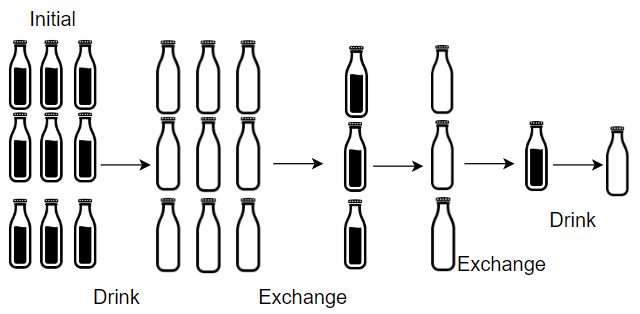5499. Detect Pattern of Length M Repeated K or More Times
Given an array of positive integers arr, find a pattern of length m that is repeated k or more times.
A pattern is a subarray (consecutive sub-sequence) that consists of one or more values, repeated multiple times consecutively without overlapping. A pattern is defined by its length and the number of repetitions.
Return true if there exists a pattern of length m that is repeated k or more times, otherwise return false.
Example 1:
Input: arr = [1,2,4,4,4,4], m = 1, k = 3 Output: true Explanation: The pattern (4) of length 1 is repeated 4 consecutive times. Notice that pattern can be repeated k or more times but not less.
Example 2:
Input: arr = [1,2,1,2,1,1,1,3], m = 2, k = 2 Output: true Explanation: The pattern (1,2) of length 2 is repeated 2 consecutive times. Another valid pattern (2,1) is also repeated 2 times.
Example 3:
Input: arr = [1,2,1,2,1,3], m = 2, k = 3 Output: false Explanation: The pattern (1,2) is of length 2 but is repeated only 2 times. There is no pattern of length 2 that is repeated 3 or more times.
Example 4:
Input: arr = [1,2,3,1,2], m = 2, k = 2 Output: false Explanation: Notice that the pattern (1,2) exists twice but not consecutively, so it doesn't count.
Example 5:
Input: arr = [2,2,2,2], m = 2, k = 3 Output: false Explanation: The only pattern of length 2 is (2,2) however it's repeated only twice. Notice that we do not count overlapping repetitions.
Constraints:
2 <= arr.length <= 1001 <= arr[i] <= 1001 <= m <= 1002 <= k <= 100
给定一个数组,为是否存在长度为m的子数组,这个子数组重复了至少k词。
观察数据范围,数据量很小,直接暴力求解,代码如下:
class Solution {
public:
bool containsPattern(vector<int>& arr, int m, int k) {
int n = arr.size();
if(m * k > n) return false;
for(int i = 0; i < n; ++i) {
int rep = 0;
for(int j = i; j < n; j += m) {
bool good = true;
for(int u = 0; u < m; ++u) {
if(u + j >= n || arr[u + j] != arr[i + u]) {
good = false;
break;
}
}
if(!good) break;
else ++rep;
}
if(rep >= k) return true;
}
return false;
}
};本代码提交AC,用时4MS。




